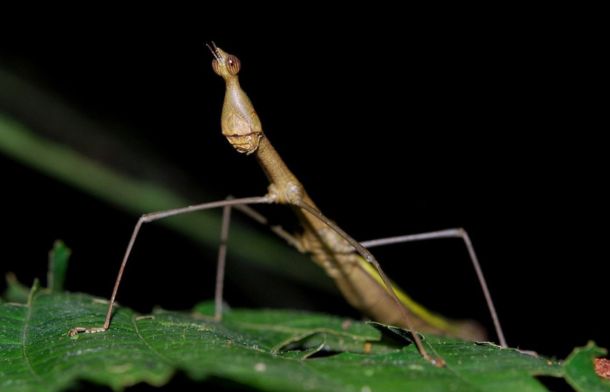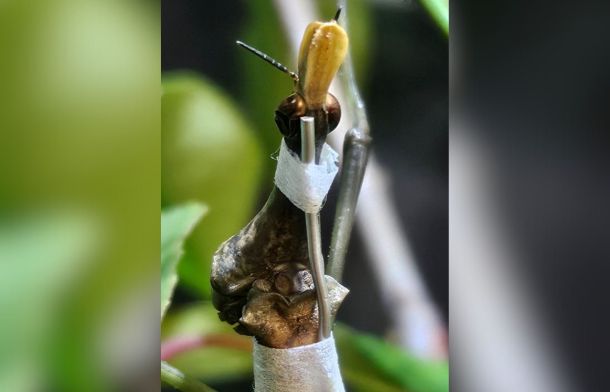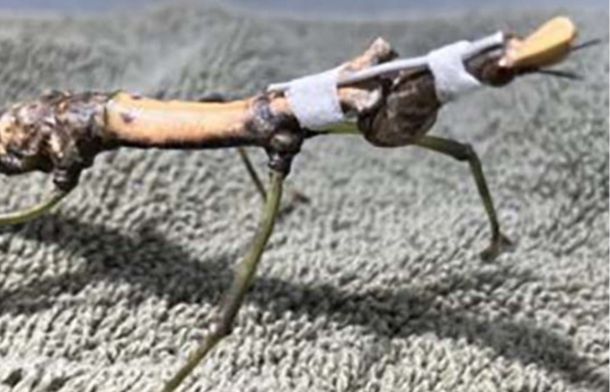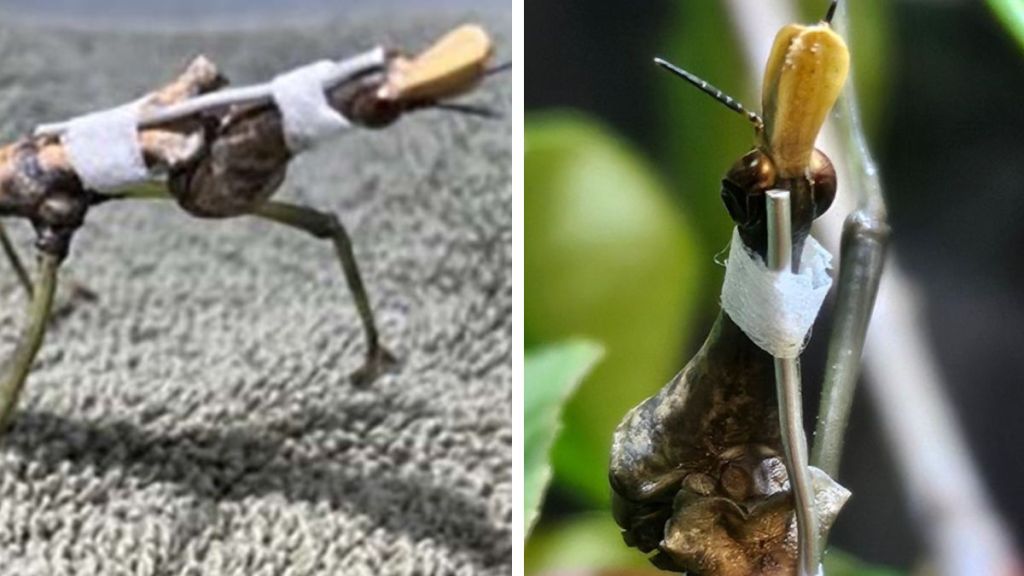The world of entomology can be fascinating, even if you don’t particularly like bugs. At the Houston Zoo, entomologists play an integral role in keeping the insects healthy. If you cringe at creepy crawlies, don’t despair. Today, we’re talking about the Peruvian jumping stick, which looks more like a stick than a bug. This insect is a member of the grasshopper family, also called a stick grasshopper and a horse-headed grasshopper.

As these insects grow, they molt (shed). They lose their exoskeleton during this process and are vulnerable while their new outer shell hardens. When the female Peruvian jumping stick at Houston Zoo was in the post-molt phase, entomology keeper Julie noticed a problem. She saw a slight crease around the “neck” area.

This led to the poor little bug having a wobbly head. The head was flopping back when the insect was climbing, disrupting its movement. Working together, Julie and the veterinary team devised a brilliant solution. They designed a tiny neck brace for the insect to keep its head in the proper position while the exoskeleton hardened!

Houston Zoo Reports A Happy Ending
The tiniest neck brace was made from everyday items. The rigid portion is a sterile cotton swab. Veterinary personnel secured it to the insect’s body using soft microspore tape. The Peruvian jumping stick only wore the neck brace for several days. After removing the brace, the insect could resume normal movement and support its head. There is a slight crease where the damage occurred, but the insect is healthy otherwise.
The staff at the Houston Zoo provides expert veterinary services to all animals, large and small. Keeping an eye on many different types of critters can be challenging, but all 6,000 residents enjoy excellent health care. Kudos to the care team for working out this brilliant solution for the Peruvian jumping stick. Please share it with a friend if it doesn’t “bug” you too much.
You can find the source of this story’s featured image here and here.
Want to be happier in just 5 minutes a day? Sign up for Morning Smile and join over 455,000+ people who start each day with good news.



